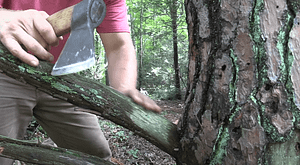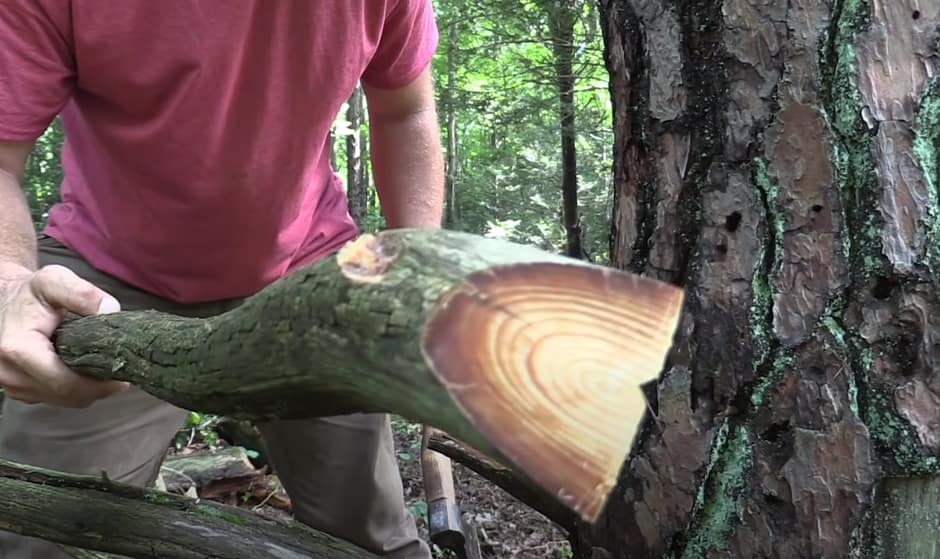Being able to reliably light a fire in wet weather conditions is a life-saving skill. Being able to find fatwood when it's wet out is the key to fire. Fire can keep you warm, dry clothes, purify water, cook food and signal for rescue. But lighting one in wet conditions can be tricky.
That's where something called Fatwood comes in.
Finding fatwood can be tricky, especially if you’re new to bushcraft or outdoor life. Thankfully, the good people at Coalcracker Bushcraft have created a helpful video tutorial on how to find and process fatwood.
Before we get into the nitty-gritty of what they have to share...
What Is Fatwood?
Fatwood is a part of a dead pine tree that is full of hardened pine resin. It is sometimes known as fat lighter, candlewood or deer tallow. Fatwood is one of the best fire-starting fuels mother nature has given to us bushcrafters. And that resin-soaked wood from the humble pine tree can be a lifesaver in a survival situation.
It’s the resin that makes it the perfect fire starter as not only is it rot-resistant it also contains terpene, the extremely flammable component found in turpentine.
But the best thing about this resin?
It burns no matter the weather as the resin also makes it waterproof. So, if you find yourself in a soggy situation while exploring the great outdoors, you can still light a fire for warmth or to cook on. Being able to quickly and easily locate fatwood could be something of a lifesaver.
So how do you find Fatwood?
How To Find Fatwood
Step 1: Where To Look? (Video 0.41 - 1.34)
Any type of evergreen tree contains resins so if you’re walking through a wooded area with pines or large evergreens, chances are there will be fatwood around. Basically, you’re looking for dead pine trees in which the resin will have settled and built up.

Branches protruding out from the trunk or the base of a downed tree towards the centre are also great spots.
Don't be fooled, what looks to be a rotting stump may well contain dry fatwood inside.
Step 2: Recognise the Resin (Video 2.14 - 2.50)

Once you’ve located a possible fatwood branch, you need to know how to tell if it’s worth keeping for tinder or not.
With an axe, carefully cut into the branch aiming as close to the point of connection with the trunk as possible. If you see the orange/red of the resin build-up, then you’re in luck! Obviously, if you see pine resin still in its liquid form this isn't going to work and you'll need to continue your search.
Step 3: How To Process Fatwood (Video 2.58 -4.14)

The only tools you will need for this step is an axe and a sharp knife. Split the branch with the axe to expose the resin build-up in the wood. It should have the distinct aroma of turpentine, a sure-fire way of telling that you have fatwood on your hands.
Take the back of your knife and aiming it away from you, scrape the wood to create some fatwood shavings. This will be your tinder.
Quick Tip
Cut small kindling (thumb thickness) size pieces off to keep in your fire starting kit. Fatwood makes for a more reliable fire kit addition then cotton balls as it will still work even if it gets wet!

Step 4: How To Light your Fire with Fatwood Shavings (Video 4.29 - 5.02)

Fatwood shaving will take a spark from a Ferro rod and you can also get ignition via char cloth with flint and steel. If you don’t have a Ferro rod, a lighter or matches will also do the trick.
As always make sure you have dry kindling ready and that you have prepared the ground and base. It may also help to cover your fireplace with a large chunk of bark to protect it from rain and in some cases, you may need to build up some wind protection.
Incidentally, the small matchstick and thinner branches often found around pine trees makes superb kindling.
And don't forget you can find out more fire lighting tips in some of our other articles, including another amazing natural fire lighting aid here.
So There You Have It...
Fatwood is one of the best fire tinders you can find. The perfect addition to your emergency fire starter kit. Just one piece of fatwood can give enough shavings for multiple fires. Its also renewable, waterproof, and free! If you’d like to receive more helpful guides and information for your adventures in the wilderness, sign up for our mailing list.
